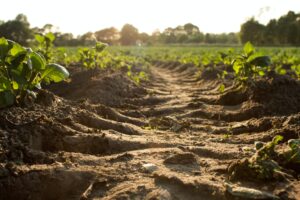APPLICATIONS:
- Feedstocks for the production of biofuels and bioproducts
ADVANTAGES:
- Compatible with downstream processes
- Supported (multi)metallic-nanoparticle (NP) catalysts (lower loading)
- Improved process economics via catalytic reusability
- Tunable, allowing for precise control over the production of desired compounds
BACKGROUND:
Lignin is the most abundant and largest renewable source for aromatics. However, there are several challenges facing current lignin depolymerization methods that hinder the realization of full scale lignocellulosic biorefining. These hurdles include harsh environments for chemical catalysis, poor yield and selectivity, as well as low catalytic efficiency.
Therefore there is a need for robust catalytic processes that have high selectivity, minimum char formation, high conversion, and are reusable.
TECHNICAL DESCRIPTION:
Researchers at the Joint BioEnergy Institute have demonstrated a method to depolymerize lignin into valuable monomers with the use of a supported metal-nanoparticle catalyst. This process boosts product selectivity, does not require harsh conditions, increases yields, and results in little coke formation on the catalyst.
The researchers demonstrated oil (aromatics/phenolics) yields as high as approximately 70% from lignin with up to 200 mg of guaiacols per gram of lignin. The catalyst showed minimum char formation (less than 15%). The researchers also demonstrated catalyst recyclability and reusability multiple times without any significant loss of activity.
One notable advantage of this method is its compatibility with downstream processes, enabling smooth integration into existing industrial operations. Additionally, the tunable nature of the supported multimetallic NP catalysts allows for precise control over the production of desired aromatic and hydrocarbon compounds.
Further research will be carried out to understand the reaction pathway, catalytic sites, and environmental and economic impact.
DEVELOPMENT STAGE:
Proven Principle
PRINCIPAL INVESTIGATORS:
- Hemant Choudhary
- Lalitendu Das
- John Gladden
- Blake Simmons
- Seema Singh
FOR MORE INFORMATION:
STATUS:
Patent Pending
SEE THESE OTHER BERKELEY LAB TECHNOLOGIES IN THIS FIELD:
Fractionation of Lignocellulosic Biomass Using Schiff-base Ionic Liquids 2020-149
Ensiled Biomass to Increase Ionic Liquid Pretreatment Efficiency 2019-102
Double Salt Ionic Liquids for Efficient Biomass Pretreatment 2020-084
